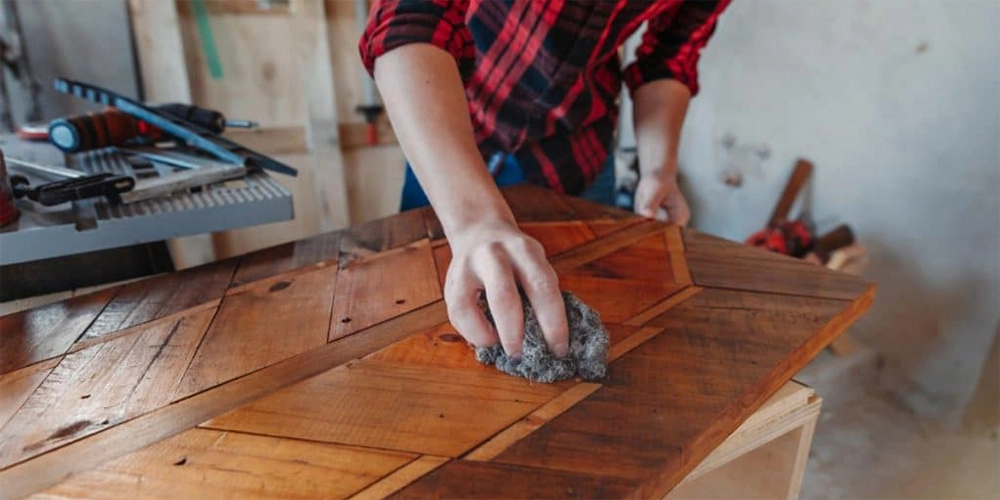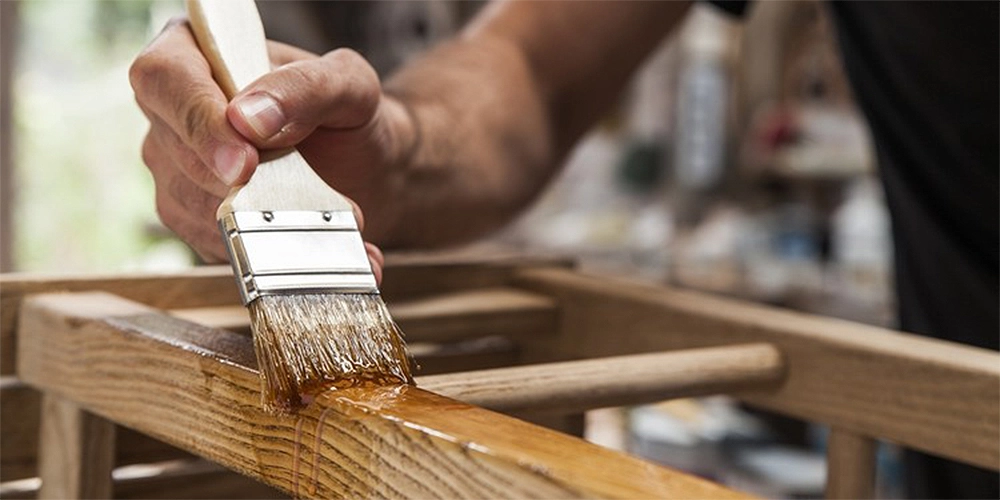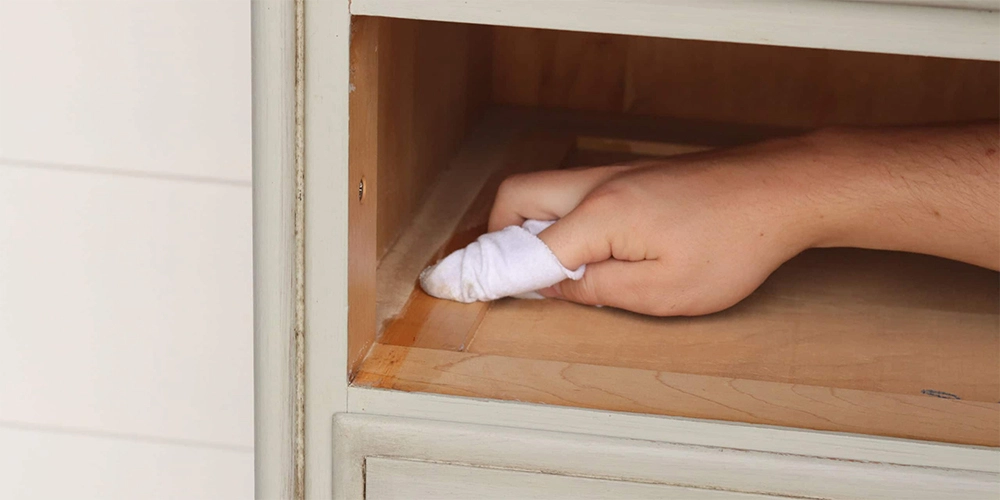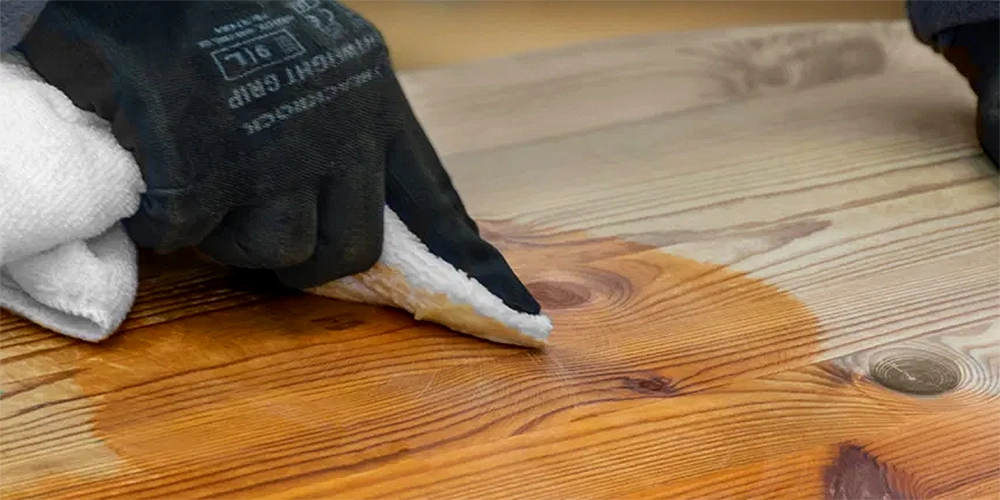
Wood Wax Oil: Natural Finish for Furniture, Floors & Lights
Wondering about wood wax oil? Learn its benefits, how it differs from paint, best uses, durability, and application tips. A complete guide to this natural wood coating for homes, light fixtures and furniture.
In recent years, wood wax oil has been getting more and more popular in the global wood products community – from minimalist solid wood dining tables and restored vintage rattan furniture, to wooden ceiling lamps and renovated hardwood floors in old houses. More and more woodworkers and homeowners are starting to choose it as their go-to natural coating.
But is it really a “natural coating” or just a “scam”? What makes it better than traditional paint? Is it really more eco-friendly for home use?
I’ve been asked these questions thousands of times in my messages – beginners who just bought solid wood beds worrying if it will crack after application, carpenters with ten years of experience wondering if the process is too complicated, and even old Italian craftsmen making antique furniture asking how it compares to European products.
Today, I’ve dug deep into all these questions and picked out the 9 most essential ones (really, these are the top 9 most frequently asked). Let me break it down for you.
Whether you’re a beginner wanting to give your home floors a natural protective layer, or a craftsman looking to understand industry trends, after reading this, your understanding of wood wax oil will become crystal clear.
1. What Is Wood Wax Oil?
Wood wax oil has ancient roots in China, dating back thousands of years to traditional natural coatings like tung oil and raw lacquer—both plant-based extracts.
Later, Europeans adopted this technique and made some industrial improvements, such as using machines for refining and adjusting the formulas, which led to the wood wax oil we know today.
Simply put, wood wax oil is a natural mixture made by blending plant oils (like flaxseed oil and sunflower oil) with plant waxes (such as beeswax and carnauba wax). It contains no formaldehyde, no benzene, no heavy metals—and it’s so safe that some people even use it to clean cutting boards (it’s basically a “food-safe cleaner”).
Here’s the core idea: Wood wax oil is like a natural skincare product for wood—it “nourishes” the wood by soaking in rather than “plastic-wrapping” it with a coating.

2. Difference Between Wood Wax Oil and Paint?
Here’s the key difference in one sentence: One penetrates, the other coats.
Paint:
When applied, it forms a plastic-like film on the wood’s surface. The smoothness you feel comes from this coating—not the wood itself. Over time, this film can peel or crack because it doesn’t truly bond with the wood.
Wood Wax Oil:
It’s a penetrating oil—the oils seep into the wood’s fibers and pores, becoming part of the wood itself. This means the wood’s natural texture, feel, and even existing scratches remain visible. When you touch wood treated with wax oil, you’re feeling the actual wood, just like freshly cut timber.
Example:
Run your fingernail across a wax-oiled table—you’ll feel the wood’s softness or hardness underneath. But on a painted surface, you’re just touching a hard, plastic-like film.
3. Where Is Wood Wax Oil Best Used?
In theory, you can apply it to any wood, bamboo, or rattan item—dining tables, floors, cabinets, wicker chairs. But whether you should use it depends entirely on the environment.
Best for Homes (Highly Recommended):
Perfect for low-traffic areas like bedroom floors, living room coffee tables, and kids’ furniture. Its eco-friendly formula is safe for children and pregnant women, and it preserves the wood’s natural scent (like the fresh aroma of pine).
Use with Caution in Public Spaces:
Not ideal for high-traffic areas like mall floors or restaurant seating. While it resists water and stains, it’s less durable against scratches from chairs or spills. Over time, it may lose its shine and look worn.
Special Outdoor Formulas Only:
For garden furniture or fences, use a weather-resistant wood wax oil with UV protection. Regular wood wax oil isn’t designed for outdoor use—it can crack and fade without proper UV shielding (it’s not “sunscreen” for wood!).
Key Takeaway:
Wood wax oil is a bonus, not a miracle solution. Always consider your space’s real needs before applying it.

4. Is Wood Wax Oil Scratch-Resistant?
Here’s the honest truth: Don’t blame the wood wax oil—blame the wood itself.
Wood wax oil protects, but it can’t change the wood’s natural hardness.
Hardwoods (like walnut or teak): These dense, tough woods stay scratch-resistant even after wax oil treatment.
Softwoods (like pine or ash): These lighter woods dent easily—drop something heavy or let a pet scratch it, and you’ll see marks. (Case in point: My friend’s pine floor with wax oil? His cat turned it into a pockmarked battlefield.)
Bottom line: Want durable floors/furniture? Pick the right wood first. Wood wax oil helps—but it’s not a magic shield. Think of it as a booster, not a miracle fix.
5. Is Wood Wax Oil Waterproof and Stain-Resistant?
Here’s how I test it in real life – simple methods with clear results:
Water Test: Pour hot water on a wax-oiled oak board. The water beads up instantly and rolls off, leaving almost no mark.
Stain Test: Draw with a marker on the surface. Wipe with a paper towel – the ink disappears cleanly, no staining.
Soaking Test: Submerge the same board in water for 24 hours. When dried, it shows no warping or cracking, just stays smooth and shiny.
Important Limitations:
Wood wax oil isn’t magic waterproofing paint. It handles:
✔ Everyday spills (tea, wiping counters)
✔ Quick stains (coffee, juice splashes)
But don’t use it for:
✖ Long-term water exposure (bathroom floors will eventually warp)
✖ Deliberate abuse (soy sauce spills left to dry – nothing survives that)
Think of it as water-resistant, not waterproof. Perfect for normal household use, but not for submerged applications.
6. What Materials Can You Apply Wood Wax Oil To?
Great news: wood wax oil works on almost any wood surface. Here’s what you can (and can’t) use it on:
✔ Works Perfectly On:
Natural woods: Oak, walnut, ash – all common furniture woods
Engineered woods: Plywood and MDF (as long as they’re unpainted)
Wicker & rattan: Perfect for chairs and baskets
Key Requirement: The surface must be “breathable” – wood wax oil needs to penetrate the material.
✖ Don’t Even Try On:
Previously painted surfaces (the coating blocks absorption)
MDF boards (too dense for the oil to soak in)
Metal or plastic (completely incompatible materials)
Think of it like trying to soak up water with a sponge vs. a plastic sheet – only porous materials will work. If the surface is sealed or non-porous, the oil just sits on top and wastes your money.

7. Can Beginners Apply Wood Wax Oil Successfully?
Yes, but with some important caveats.
The quality of your application depends on two key factors:
1) Wood knowledge – Understanding that softwoods (like pine) need thin coats while hardwoods can handle slightly thicker applications.
2) Proper technique – Including surface preparation (sanding), application method (thin coats), and drying time between layers
Common beginner mistakes to avoid:
- Applying too thickly – The oil needs time to penetrate. Thick coats dry unevenly and feel sticky.
- Skipping sanding – Rough wood surfaces will feel rough even after waxing.
- Applying in humid conditions (over 70% humidity) – Slows drying and risks mold.
Pro tip:
Professional woodworkers do “thin coats with multiple layers” – this creates a smoother, more natural finish than trying to cover everything in one go.
Think of it like painting with watercolors: multiple light layers create better results than one heavy application. With practice, even beginners can achieve professional-looking results.
8. Beginner vs. Pro: What's the Difference?
Beginner Results:
- Visible streaks in uneven coats
- Patchy sheen (some areas glossy, others dull)
- Slightly rough texture
Professional Results:
- Mirror-like uniformity
- Wood grain that seems to “float” on the surface
- Silky smooth finish (like baby’s skin)
Why the gap? Professionals master these nuances:
✓ Wood-specific techniques (thinner coats for walnut, slightly thicker for ash)
✓ Perfect timing between coats (waiting 24hrs for full curing)
✓ Finishing touches (buffing with soft cloths)
With patience, even beginners can achieve 80% professional quality – perfect for furniture pieces like desks or chairs. The key is thin coats and proper drying time between layers.
Remember: Even master woodworkers started as beginners. Your first project might not be perfect, but it will be your beautiful hand-finished creation.
9. Brand Differences: Same Core Function, Different Details
Here’s the honest truth about wood wax oil brands:
The Basics Are Universal
All reputable brands use the same fundamental formula:
Plant oils (linseed, sunflower)
Natural waxes (beeswax, carnauba)
Where Brands Differ:
1) Formulation & Scent
Some add more carnauba wax for extra shine
Others emphasize beeswax for a softer finish
Scent varies from light nutty aroma to almost odorless
But here’s the key: None contain harmful chemicals
2) Application Methods
Budget brands often recommend simplified “one-coat” systems
Premium brands may suggest detailed “primer + topcoat” routines
Important: Follow YOUR product’s instructions – no single “right” way exists
3) Price Differences
Economy brands: $20-30 per liter
Premium brands: $50-80 per liter
Remember: You’re paying for packaging, branding, or minor formula tweaks – not magical properties
Pro Tip:
For most homeowners, mid-range brands offer the best value. Save the premium products for fine antique furniture restoration.
The real magic isn’t in the brand name – it’s in proper application. Even budget wood wax oil, correctly applied, will outperform expensive paint any day.
Categories
Recent Posts
-
 Can I Give A Wood Lamp as A Gift?26 Jun 2025
Can I Give A Wood Lamp as A Gift?26 Jun 2025 -
 Natural Wood Finishes Compared: Wood Wax Oil, Beeswax & Varnish25 Jun 2025
Natural Wood Finishes Compared: Wood Wax Oil, Beeswax & Varnish25 Jun 2025 -
 Wood Wax Oil: Natural Finish for Furniture, Floors & Lights25 Jun 2025
Wood Wax Oil: Natural Finish for Furniture, Floors & Lights25 Jun 2025 -
 Why Are North American Black Walnut Pendant Lights Expensive?25 Jun 2025
Why Are North American Black Walnut Pendant Lights Expensive?25 Jun 2025 -
 Round vs Linear Living Room Lights: 3 Ways to Choose What Feels Right20 Jun 2025
Round vs Linear Living Room Lights: 3 Ways to Choose What Feels Right20 Jun 2025




